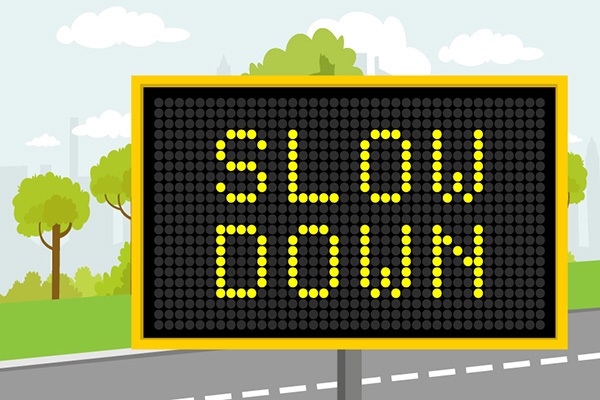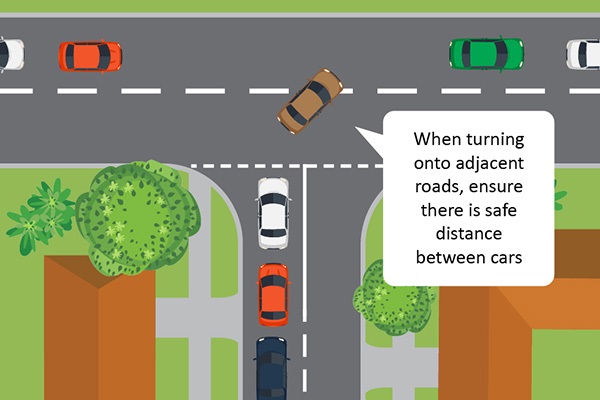Traffic Concerns
Speeding
Speeding does unfortunately happen in local streets and only the streets with the most significant issues can be treated with physical traffic management devices such as road humps.
Road humps are installed at locations where the general traffic using the street is speeding. We undertake traffic surveys to determine the locations with the most significant issues and request funding to install physical devices in a couple of locations per year.
For streets that have speeding issues that do not present a significant enough issue to warrant physical measures, we can organise a Speed Advisory Message trailer to be positioned on the street to encourage motorists to slow down if they are speeding.
Whenever possible, Council undertakes Local Area Traffic Management studies that look at areas as a whole and, in consultation with residents in that area, develop a package of traffic management treatments at multiple locations to provide a holistic solution to the community’s traffic concerns.
If you believe your street has speeding issues, where a significant number of vehicles are travelling above the speed limit, please fill out this form and an officer will be in contact to discuss the matter further with you.
Report speeding concern

Hooning (anti-social driving behaviour)
The issue of anti-social driving behaviour – or hooning - is a difficult one to resolve and, ultimately, a matter for Victoria Police. Unfortunately, the activities that occur on local roads become particularly difficult to patrol and provide a continuing challenge for them. Our general advice is as follows:
- If there is hooning in progress, ring the Crime Stoppers Hoon Hotline on 1800 333 000 or make a report on the Crime Stoppers website at Crime Stoppers Victoria while it is happening, every time, as this is a crime. The more people that call, the more police know about what is going on. Victoria Police won’t know it’s happening unless people call them, and they actively encourage you to ring or make a report every time there is hooning.
- Each call to Crime Stoppers is logged, so Police are alerted to what is happening. The more reports made will help Victoria Police gain an understanding of the extent of the problem, target repeat offenders and enable them to identify and focus on hotspot areas.
Council is sometimes asked to install traffic management devices, such as road humps and roundabouts, to address hoon driving activities.
However, this is not a sustainable solution as this behaviour can occur in any local road even with treatments installed. The installation of traffic management devices is mainly considered in situations where traffic flow and safety problems are inherent to the normal traffic use of a street, as opposed to specific anti-social behaviour.
School Traffic Issues
Traffic congestion around schools can be frustrating. However, it is generally short-lived and traffic flow is back to normal within half an hour. Council does patrol schools regularly and issue parking fines especially given the potential safety risk with students in the area.
If you are a parent
- Obey the signs - Parking restrictions and No Stopping signs are in place to keep students safe. Parking along both sides of the road, double parking and parking too close to intersections can cause major safety issues and put school children and other road users at risk.
- Don’t come early - arrive at the school to pick up children when school finishes, coming early only clogs up the local streets.
- Follow the drop-off and pick-up rules - If there are “kiss and go” restrictions, don’t enter the area until you know your child is ready to be picked up.
- Do not block resident driveways - Be considerate of residents and businesses in the area and ensure they can access their properties.
- Use sustainable transport modes - Park a few streets away and walk or ride with your children to school.
If you live near a school
When possible, try to plan your day so that you avoid travelling down the congested streets during school drop-off and pick-up times.

Congestion
Reducing traffic congestion on arterial (main) roads is the responsibility of the State Government (Department of Transport and Planning) and Council continues to advocate for improvements as required.
As the traffic on the arterial road network increases, more motorists may try to avoid the congestion by using the local road network. This can cause longer queues for traffic wanting to enter arterial roads. Banning turn movements or installing traffic management treatments, such as road humps, may push the issue to the next street or intersection and is generally not a sustainable option.
Some level of congestion is expected in peak times.
We suggest:
- If you can, use traffic lights to access the arterial roads
- Always drive safely – It can get frustrating waiting in traffic and motorists can be tempted to take risks. Please, always wait until the traffic is clear and obey all road rules.
- Use sustainable transport - Try and use public transport or ride a bike where possible.

"Rat Running" (using the local roads to avoid the congestion)
As the traffic on the arterial road network increases, more motorists try to avoid the congestion by using the local road network, which is what we call “rat running”.
This can cause safety issues on local roads, such as speeding, and can increase congestion and cause long queues where vehicles want to re-enter the arterial network and turn onto an arterial road.
Banning turn movements or installing traffic management devices, such as road humps, may shift the issue to the next street or intersection, which is not sustainable.
Whenever possible, Council undertakes Local Area Traffic Management (LATM) studies that look at areas as a whole and, in consultation with residents in that area, develop a package of traffic management treatments at multiple locations to provide a solution to the community’s traffic concerns.